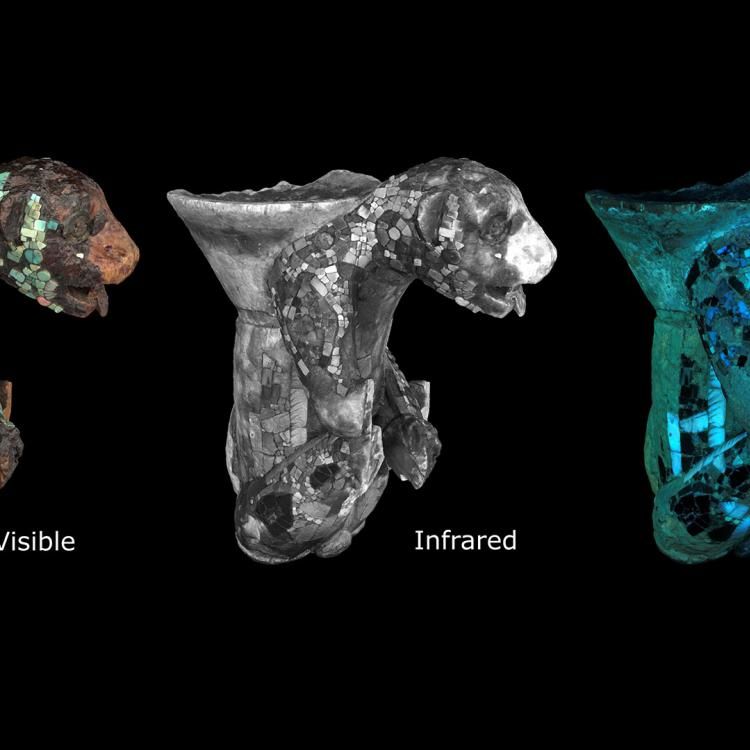Contact us
Email: friends@britishmuseum.org
Phone: +44 (0)20 7323 8195
If you are able to contribute over £1,000, you will be invited to a special event at the Museum to see the Arago Photogrammetry Rig in action and meet the team.
We are asking you to support the purchase of an Arago Photogrammetry Rig, which will allow us to capture unprecedented 3D 'multiband' surface-imaging of objects.
The Museum strives to do two main things: firstly to look after and research the collection, and secondly to interpret and share this with the public. The Arago Photogrammetry Rig will allow us to achieve both aims at once.
The rig scans objects and produces 360-degree data sets under different illumination wavelengths such as infrared, ultraviolet and so on, creating an incredibly detailed multi-layered 3D image of the object. This allows experts to view aspects that you wouldn't see with the naked eye without causing damage. It will also allow us to share this data with experts across the world, promoting collaborative projects without the risks of transporting the object. The incredible images will enable the Museum to offer interactive displays both on-site and online, so the public can see these new insights first-hand.
Joanne Dyer quote
We are at an exciting turning point in how imaging techniques are allowing us to look into the objects in the collection, revealing details that we have never been able to see before. This instrument will be crucial in achieving that.
Joanne Dyer, Colour Scientist
Case study
The Turquoise Mosaics are a spectacular group of objects from Mesoamerica, dating from between 1400 and 1521. The group includes a seated jaguar figure fashioned from wood and intricately decorated with many materials, including turquoise, shell and gold.
Pilot studies with the Arago Photogrammetry Rig enabled us to view the object in three dimensions under different wavelengths of light, for the first time. The responses of the jaguar figure under visible, infrared and ultraviolet light helped us to identify the many types of material distributed across the surface of the figure – without the need for destructive analysis (see image caption). Infrared, for example, allowed us to see the distribution of gold fragments in the bowl, which are not visible to the naked eye.
Combining these surface images with a 3D X-ray scan of the interior of the figure (see image) also enabled us to look beneath these decorative materials, revealing that the core of the object was in fact constructed from several pieces of wood, rather than carved in one piece. This study highlights how combining these 3D images helps us to better understand how the object was created over 500 years ago.
This cutting-edge scientific imaging equipment allows us to look back in time, giving insights which are so valuable to our understanding of the collection.
Dan O'Flynn, X-ray Imaging Scientist
Transforming understanding of the collection
The Arago Photogrammetry Rig will open up new research possibilities with the integration of 3D imaging techniques for the investigation and redisplay of the Museum collection. The datasets it generates will enable us to delve deeper into questions relating to object biographies, function, collection history and state of preservation. This will allow us not only to discover more about how and why an object was made, but also how best to protect and preserve it.
Enhancing engagement with the collection
The datasets produced by the Arago Photogrammetry Rig offer an unprecedented means to present, exhibit and interpret objects made of a wide range of materials and to tell their stories in new ways. This creates enormous potential for audience engagement with digital content, showing the collection in a new light with dynamic, interactive displays, which could be explored in the upcoming exhibition on animal mummies. By publishing 3D datasets online, research findings from the collection will be made available to a global audience. This will enhance accessibility for source communities and those unable to physically visit the Museum, as well as fostering future research projects and collaborations with external researchers.





